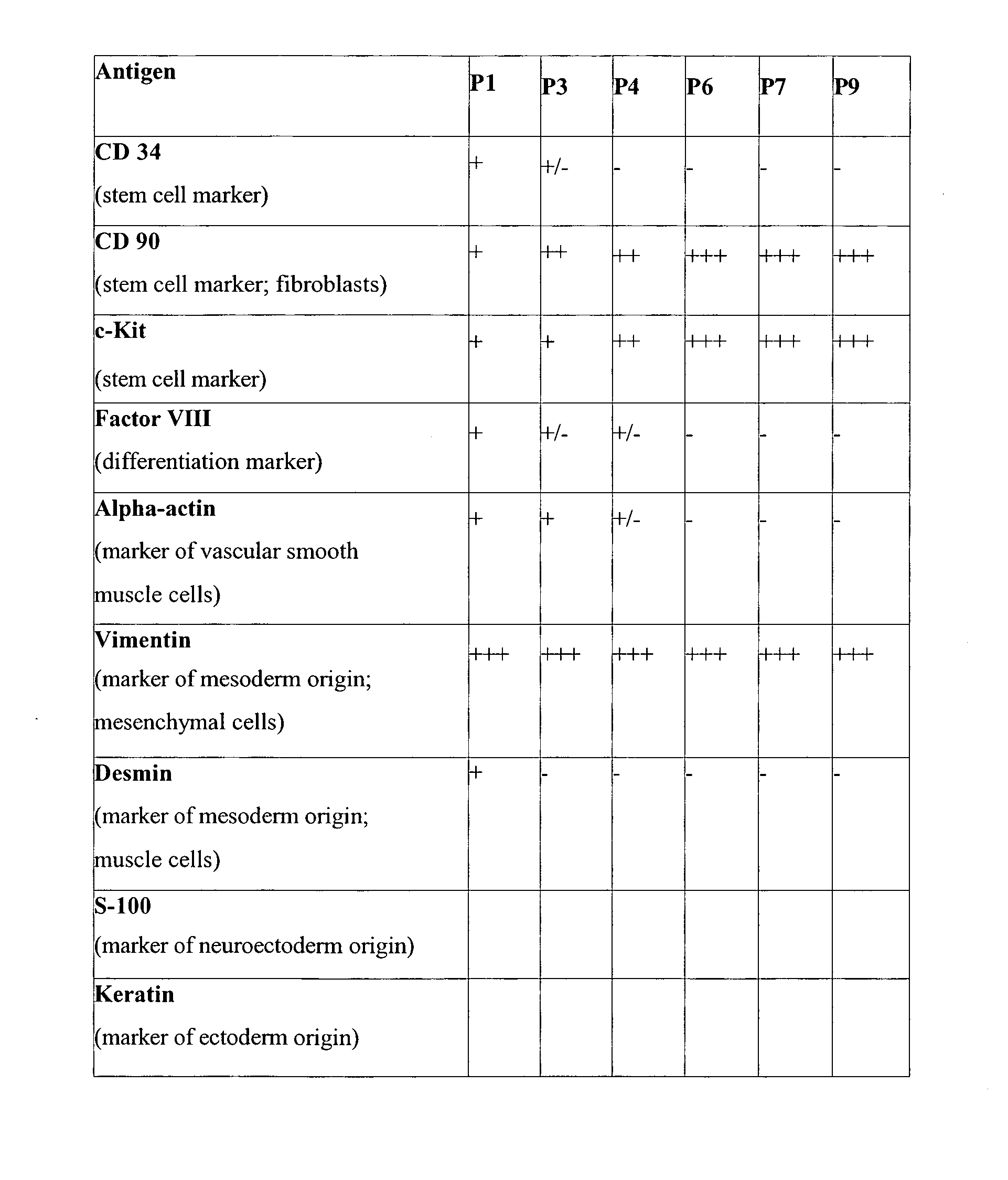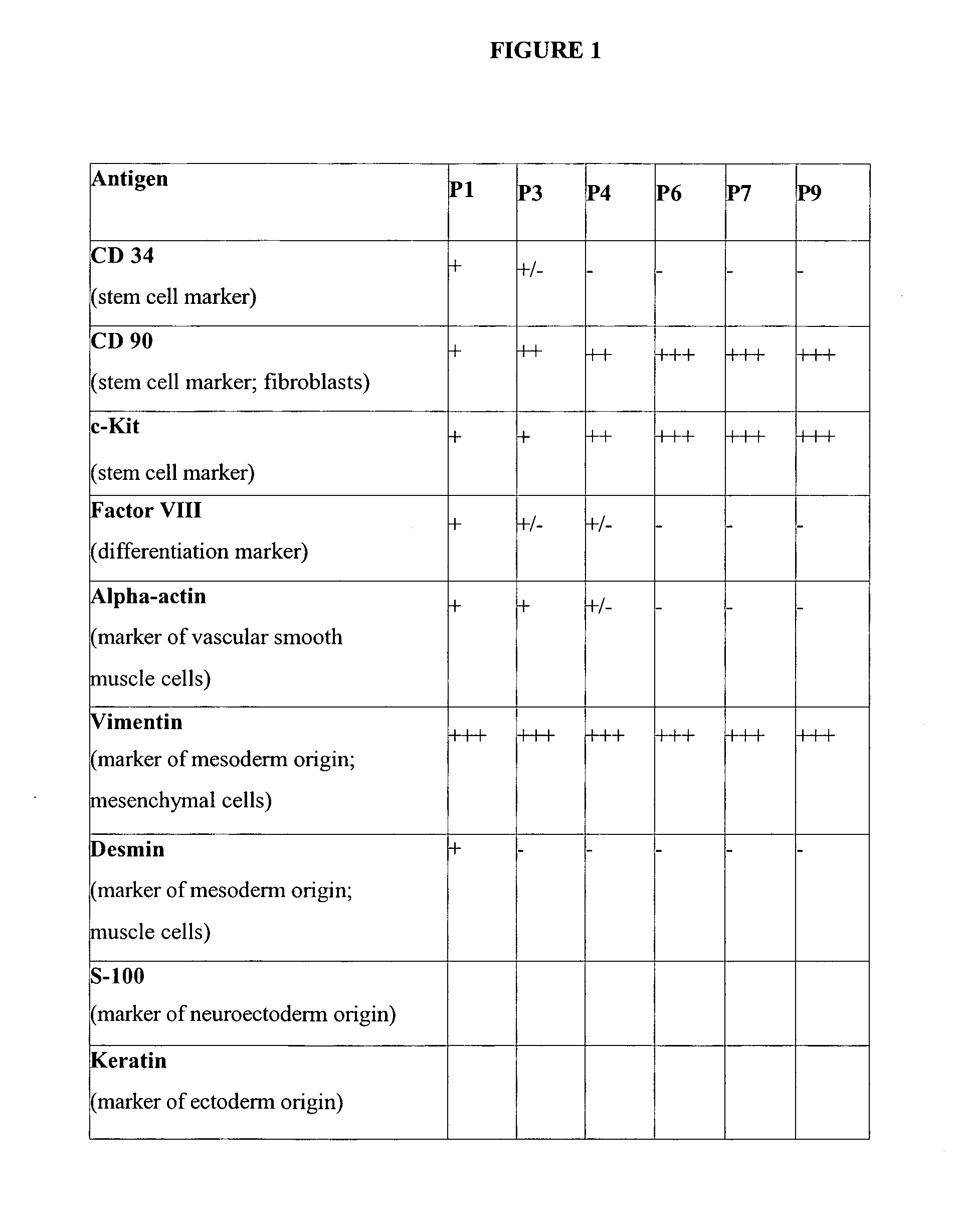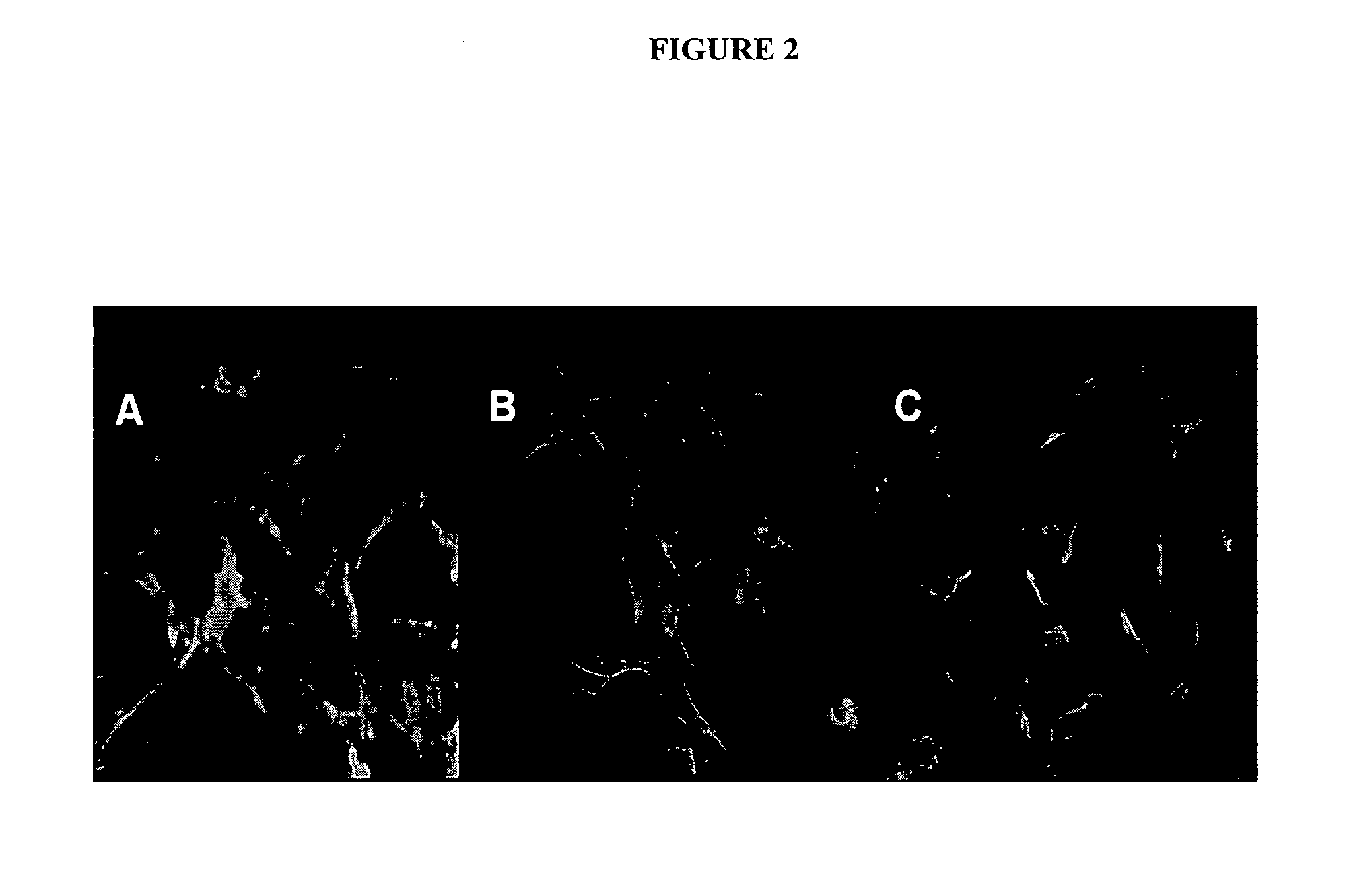Uses of mesenchymal stem cells
- Summary
- Abstract
- Description
- Claims
- Application Information
AI Technical Summary
Benefits of technology
Problems solved by technology
Method used
Image
Examples
example 1
2. Example 1
hASCs Show Potent Immunumodulatmy Activities
[0152]In this study the ability of the hASCs to inhibit T-cell activation was tested, as measured by cytokine secretion and T-cell proliferation. hASCs failed to elicit proliferation or secretion of IFNγ when co-cultured with unmatched PBMCs (not shown). Moreover, hASCs significantly inhibited the secretion of IFNγ and the proliferation of PBMCs stimulated with the superantigen SEB (FIG. 6). This inhibitory effect directly correlated with the number of hASCs added to the co-culture (FIG. 6), and was independent of the concentration of SEB (not shown).
example 2
3. Example 2
Induction of SIRS by LPS and CLP (Cecal Ligation and Puncture)
[0153]To induce endotoxemia, Balb / c mice were injected i.p. with LPS (400 μg / mouse). Mice were treated i.p. with medium or hASCs (105-106 cells when indicated) 30 min after LPS injection.
[0154]Animals were monitored every 12 h for survival and other clinical signs including ruffled fur, lethargy, appearance of diarrhea, body weight loss. Some animals were sacrificed at different times after LPS injection, blood samples were collected by cardiac puncture, peritoneal exudates, liver, lungs and small intestines were collected. Tissue specimens were immediately frozen in liquid nitrogen for protein extraction and cytokine determination, and MPO activity measurement. The peritoneal suspension was centrifuged for 5 min at 1800 g, and peritoneal cells were counted and adjusted in PBS / 3 mmol / L EDTA medium to 3×106 cells / mL. The number of viable cells in the different peritoneal subpopulations was determined by flow cy...
PUM
 Login to View More
Login to View More Abstract
Description
Claims
Application Information
 Login to View More
Login to View More - R&D
- Intellectual Property
- Life Sciences
- Materials
- Tech Scout
- Unparalleled Data Quality
- Higher Quality Content
- 60% Fewer Hallucinations
Browse by: Latest US Patents, China's latest patents, Technical Efficacy Thesaurus, Application Domain, Technology Topic, Popular Technical Reports.
© 2025 PatSnap. All rights reserved.Legal|Privacy policy|Modern Slavery Act Transparency Statement|Sitemap|About US| Contact US: help@patsnap.com



